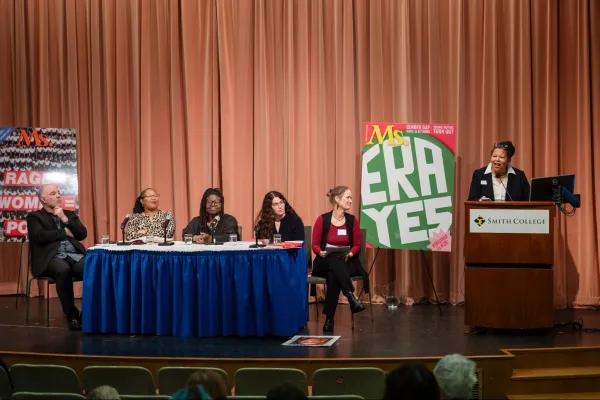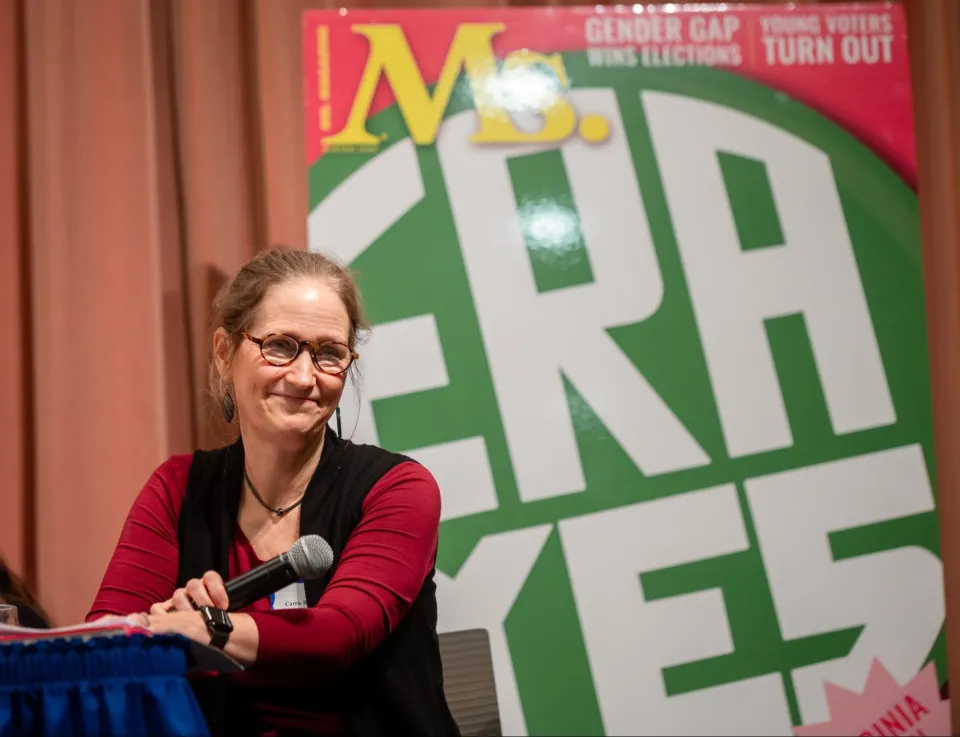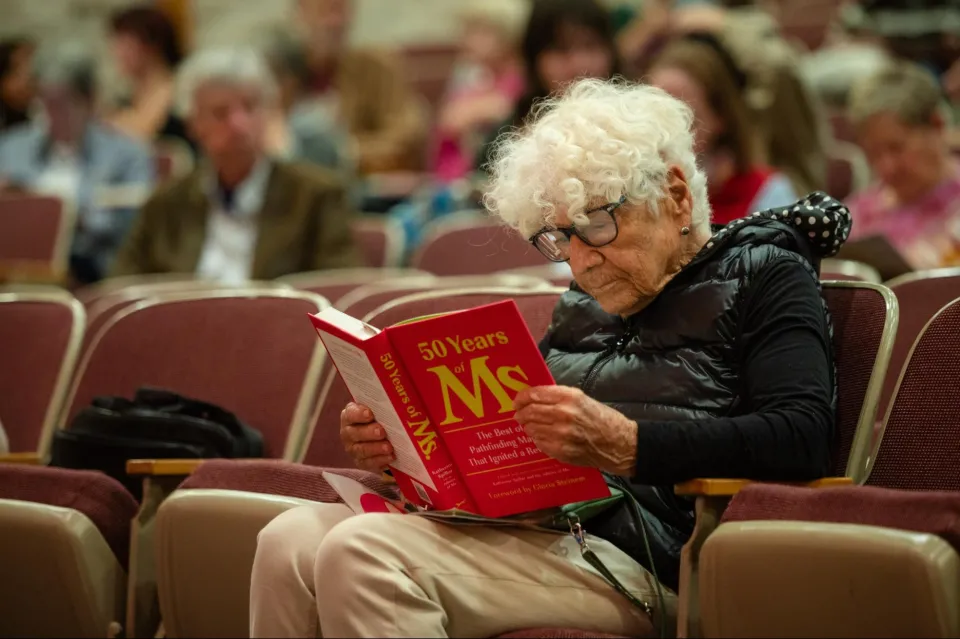Celebrating 50 Years of Ms. Magazine
News of Note
The panel of scholars and Ms. contributors at Smith College. Photo by Shana Sureck Photography
Published October 4, 2023
In mid-September, Leslie Fields set to work tackling a problem she had been mulling over for months. The dilemma was this: How to sort through 380 boxes of material, select less than one percent of those files, and use the content to tell an enormous, complicated, compelling story about a magazine, a movement, an icon, and an event.
The magazine was Ms., the movement was feminism, and the icon, of course, was Gloria Steinem ’56.
The event? A celebration of all of those things, namely the 50th anniversary of Ms. magazine, which was recently recognized at Smith with a special luncheon, panel discussion, and archive open house. The event was organized in large part by Professor Carrie Baker, a long-time contributor (with some 369 Ms. articles to her name) who also serves as the chair of the Ms. Committee of Scholars.
Professor Carrie Baker leads the Ms. magazine 50th anniversary panel discussion. Photo by Shana Sureck Photography
Fields, the head of Smith College Special Collections Public Services, met with Baker in July and was charged with drawing from the college’s vast collections of both Steinem’s papers and Ms. archives to tell the magazine’s 50-year history.
Fields said the goal was simple: Create a display so that “someone could come in and know nothing about the history of Ms. and find something here.”
“There was so much to choose from, I had to make selections from so much good material,” Fields said. “The fun thing about the archives is that you get to see what’s behind the publication.”
The result was five stations, arranged across folding tables, that highlighted the touchstones of the Ms. magazine history. There were selections of planning documents from when the magazine was first being conceived in 1971 (first as a preview in New York magazine, then as a stand-alone preview, and finally as the first edition). There was a small sampling of the 20,000 letters readers sent in response to the Ms. preview issue. There was also a bound volume of all the magazines from that initial year.
A conference attendee browses through the book 50 Years of Ms. Photo by Shana Sureck Photography
Browsing through the published issues, visitor Doris Cohen, a retired psychologist who taught at the Smith School of Social Work, said the Ms. offerings were “fantastic articles” and “had not lost their punch.”
While much of the magazine’s material had been public, Fields said she was also interested in how she could use the archives to both contextualize the magazine and reveal the hidden scaffolding of its creation. To that end, she included such items as FBI files on Ms. writers, material on the redevelopment of the magazine’s logo, an expense report from a Christmas party, and author letters.
On one station, under the names of such prominent writers as Barbara Trecker, Alice Walker, and Deborah Fisher, Fields displayed articles marked with the handwritten words “not sure” or “killed.”
“I think that’s interesting to think about writers we know well, but they also had pieces that were not accepted,” said Fields. “It’s interesting to think about what was in Ms., but also what did not get into Ms.”
In remarks later that day at the Ms. panel discussion, President Sarah Willie-LeBreton noted that the correspondence, speeches, memorabilia, and photographs in the archives “document the women’s movement from multiple perspectives.”
“The collection reflects the women, the feeling, the bonds, and the energy that were necessary to launch and sustain this phase of the women's movement and this magazine,” she said. “It is a remarkable collection.”


